We love a blue porch ceiling (something you very commonly see – especially in the south). In fact, we’ve painted our porch ceiling a light blue color in nearly all of our homes! The tradition of a blue porch ceiling actually has a name – “haint blue” – along with a rich cultural history and some very practical reasoning behind it. So let’s dive into how it started and why so many people love a haint blue porch. We’re also sharing some of the best haint blue paint colors if you’re looking for one for your porch.
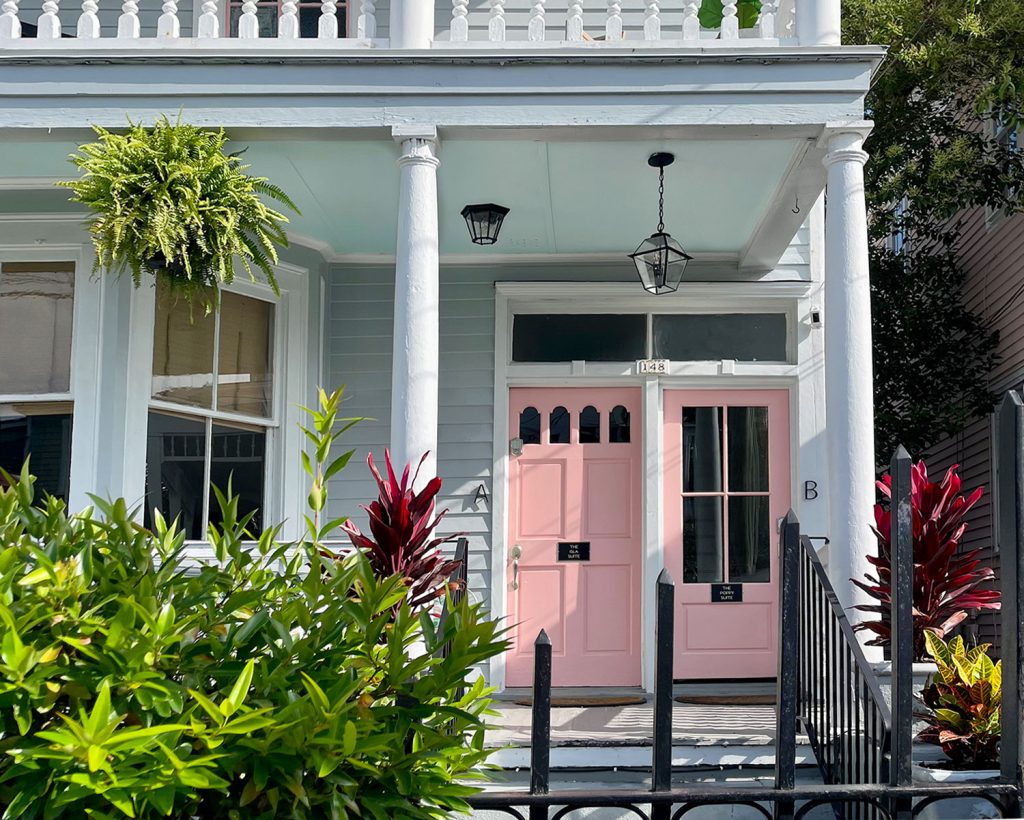
In addition to photos of our own homes, this post also features many haint blue porches we saw on our recent family trip to Charleston, South Carolina. That’s the Airbnb we stayed in shown above.
What Is Haint Blue?
Haint Blue is not one particular color. It refers to any light blue-green paint used on a porch ceiling, especially in cities in the southern United States – like Charleston, SC and Savannah, GA. It’s an appealing color choice that also has a long history behind it. Some popular haint blue paint colors are Palladian Blue and Woodlawn Blue by Benjamin Moore as well as Atmospheric by Sherwin-Williams.
Why Is It Called Haint Blue?
The name “haint” is a variation of the word haunt. It references the spirits or ghosts that the color was believed to repel. Lore had it that evil spirits would mistake the blue color for either water (which spirits could not cross) or the sky (which spirits would pass right through). So using blue paint on the outside of your home was thought to be helpful for protecting its occupants from evil.
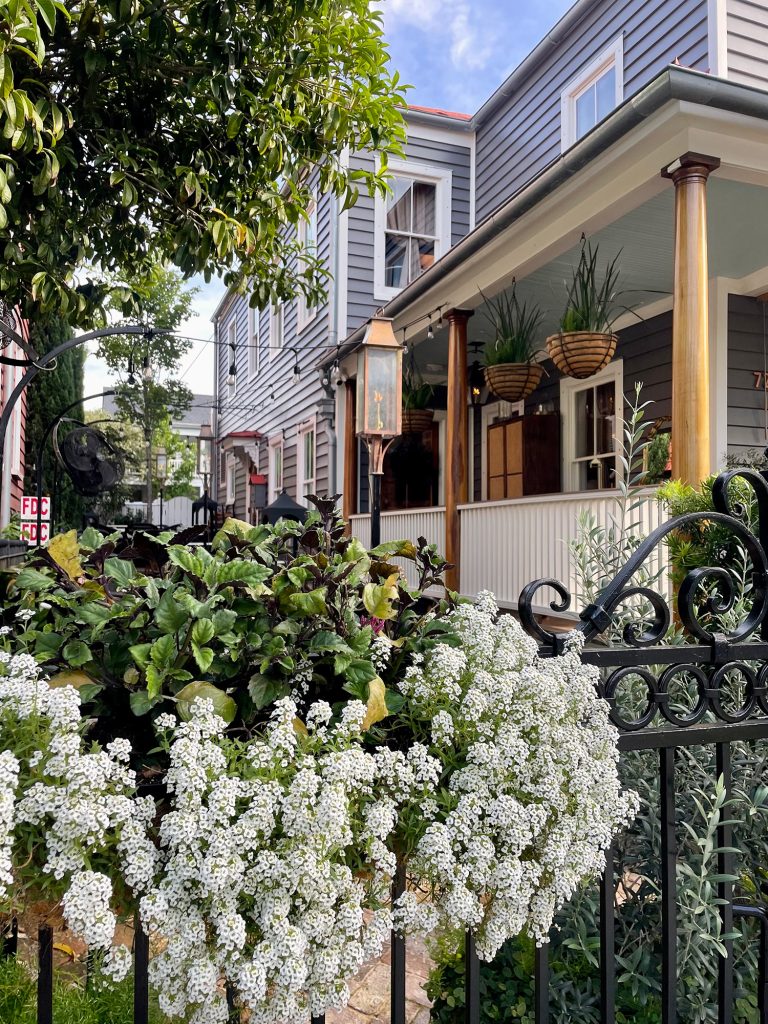
These days the term mostly refers to blue porch ceilings, but historically it’s said that haint blue was also used on shutters, doors, window frames, and other exterior surfaces.
What Are The Origins Of Haint Blue?
The haint blue tradition is said to have originated within the Gullah Geechee communities before spreading more widely through the South. Although historians note that the history is difficult to pin down. The Gullah Geechee are descendants of enslaved Africans living mostly in the South Carolina and Georgia low country. The relative geographic isolation of these communities preserved many aspects of their rich and distinctive culture, from language & art to food & music. You can learn more about them by visiting the Gullah Geechee Cultural Heritage Corridor. There’s also a great article by Atlas Obscura about the significance of indigo and the color blue among African cultures, specifically around warding off evil spirits.
Do Blue Porch Ceilings Repel Bugs?
Some modern homeowners may not fear ghosts, but many still choose haint blue porches to ward off other kinds of pests! It has long been rumored that blue porch ceilings deter bugs and birds from making nests because they confuse it with the sky. Although there’s allegedly not much scientific evidence for this (some believe the rumor is a holdover from when blue paints were made using lye, a substance that does repel insects) we will say anecdotally that our blue porch at the pink house had zero bees & bugs. However, some wasps made a nest on the ceiling of our duplex that was two doors down (which had a white porch ceiling). So in our tiny private study… there’s something to it!
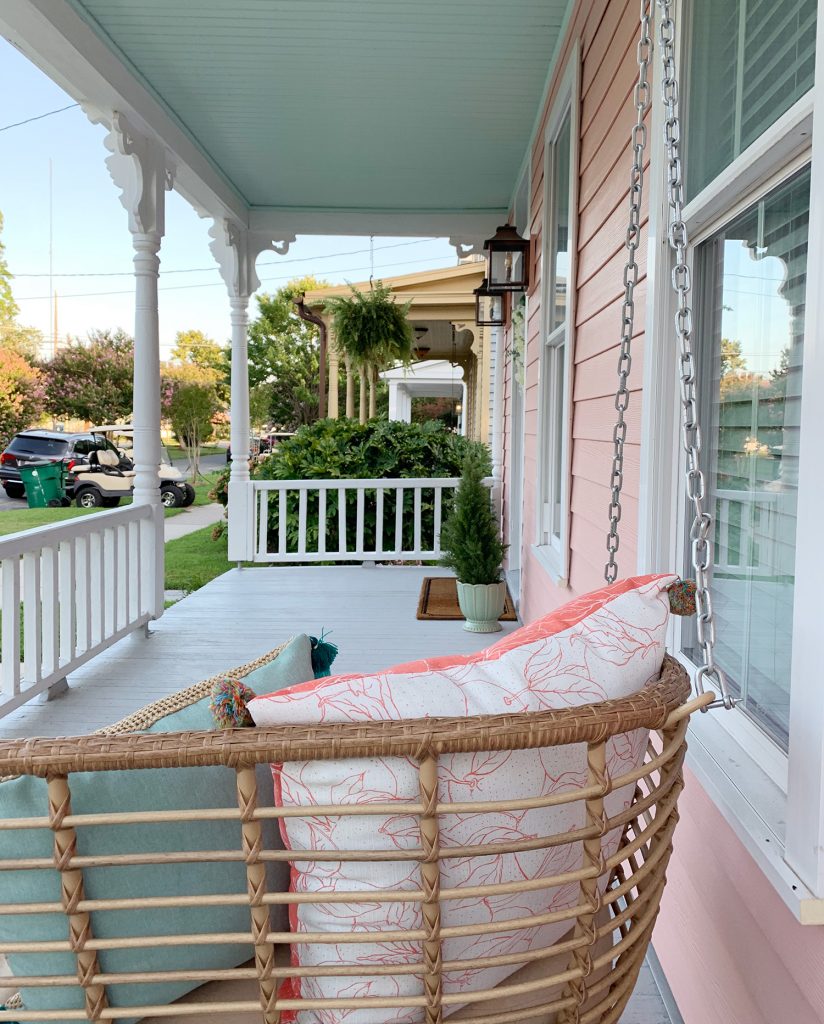
Why People Love Haint Blue Ceilings
Many people, especially in the South, choose a haint blue ceiling to be part of a longstanding tradition dating back to the early 1800s. Others like how the color mimics a clear blue sky, almost as if you are bringing the feeling of a bright, sunny summer day to your covered porch. You might even say it extends the daylight hours just a little bit!
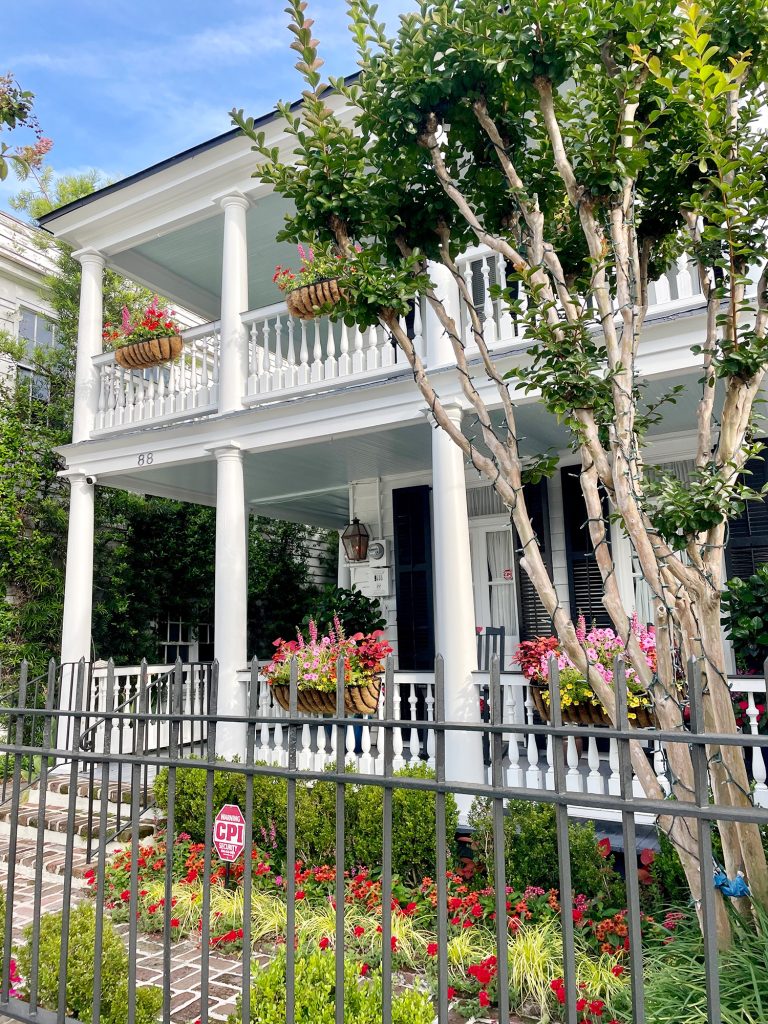
Blue paint colors in general are also known to be popular and well-loved because they work with a variety of design styles and color schemes. And since haint blue isn’t one single hue, people can choose a shade that suits their home and preference. We’ve actually used blue ceilings outside and inside our home for these reasons. We painted BM Galt Blue on the ceiling of our old living room (below) and BM Spring Mint on the ceilig of our pre-renovation bathroom. It’s a great way to add a soft pop of playfulness overhead, without making anything feel too dark or closed in.
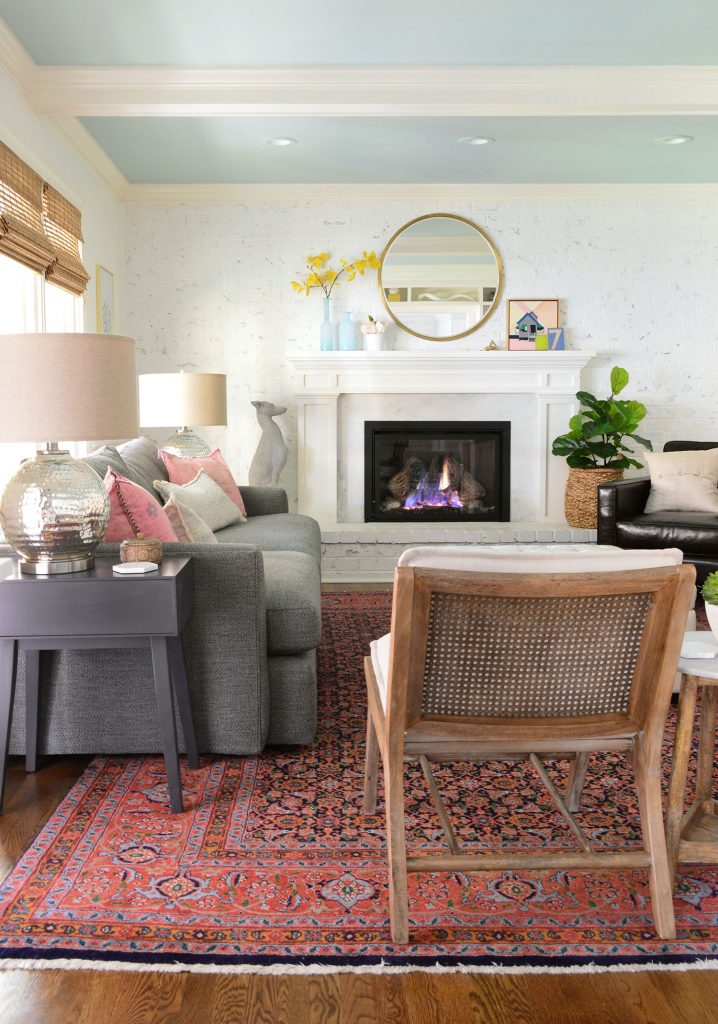
So whether you’re painting a ceiling blue to ward off spirits, repel bugs, or simply add some color, we think that considering a haint blue ceiling is always a good idea.
What Are The Best Haint Blue Paints?
Although there is no “official” haint blue paint color, there are some popular paint color names that come up again & again. We scoured dozens of lists and tallied the most frequently mentioned haint blue paint colors (spreadsheet mode: activated). As you can see, they range from light blues to deeper blue-greens. The list below kicks off with the most popular…
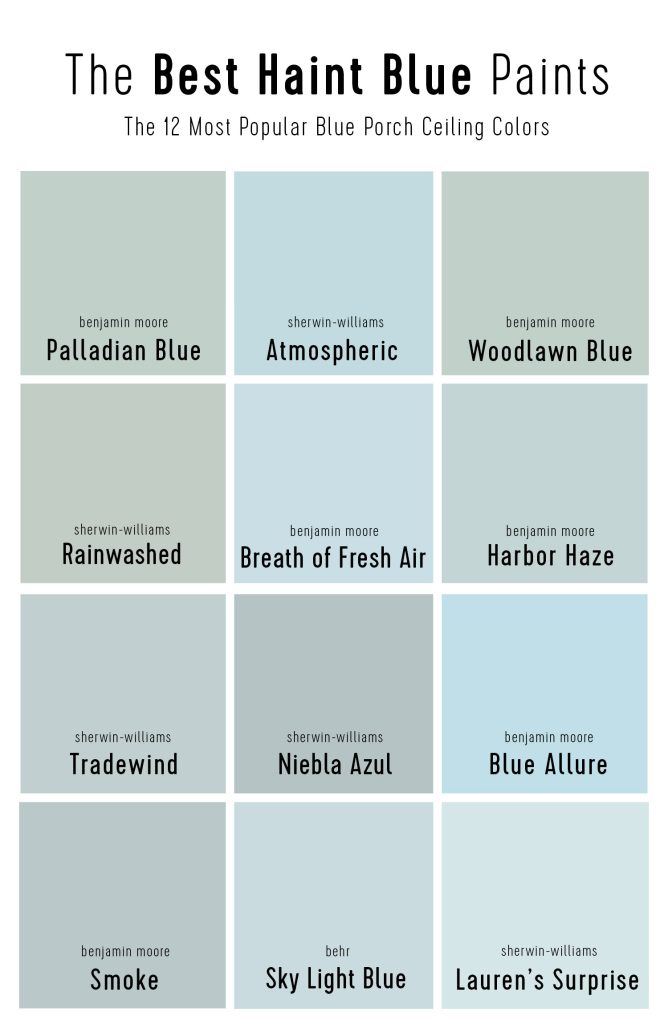
You can learn more about these top haint blue paint colors below, as well as order a removable sample sticker to test it out on your porch.
- Benjamin Moore Palladian Blue HC-144 (Sample Sticker)
- Sherwin-Willaims Atmospheric SW 6506 (Sample Sticker)
- Benjamin Moore Woodlawn Blue HC-147 (Sample Sticker)
- Sherwin-Willaims Rainwashed SW 6211 (Sample Sticker)
- Benjamin Moore Breath of Fresh Air 806 (Sample Sticker)
- Benjamin Moore Harbor Haze 2136-60 (Sample Sticker)
- Sherwin-Willaims Tradewind SW 6218 (Sample Sticker)
- Sherwin-Willaims Niebla Azul SW 9137 (Sample Sticker)
- Benjamin Moore Blue Allure 771 (Sample Sticker)
- Benjamin Moore Smoke 2122-40 (Sample Sticker)
- Behr Sky Light Blue MQ3-53
- Sherwin-Willaims Lauren’s Surprise SW-6791
How To Pick The Best Haint Blue For Your Home
The popular haint blue paint colors above are a great place to start when selecting one for your home. However there are hundreds of good options out there, so feel free to find another that fits you best. Here are tips to keep in mind:
How much light does your porch get?
Some porches get far less light than others and darker spaces may require lighter paints. Conversely, a bright porch may need a darker more saturated blue so the color doesn’t wash out in the sun. For example, our north-facing back porch was very dark due to tree cover, so we chose a lighter blue for its ceiling (Benjamin Moore In Your Eyes).
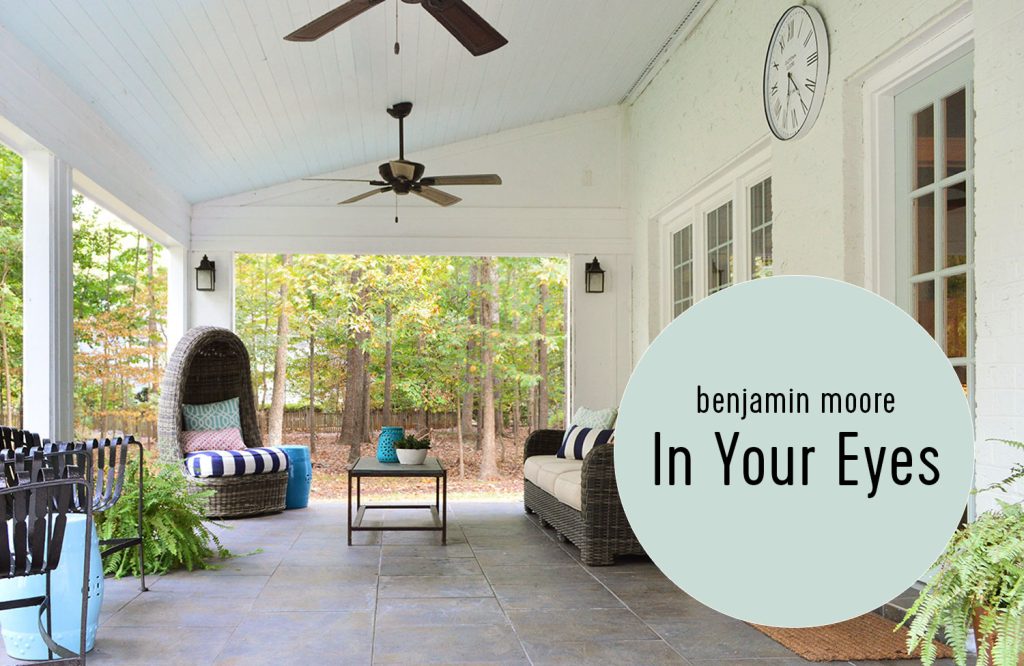
It’s smart to compare the LRV (Light Reflectance Value) of paint colors you’re considering to see how light or dark they are. Higher numbers = lighter colors. Most haint blue colors have an LRV of around 55-65. In Your Eyes is brighter, with an LRV of 75. The most popular paint listed above, BM Palladian Blue, has an LRV of 60.
What other colors do you have on your house?
Blues are very agreeable colors, so it’s hard to go wrong. However, you should consider the undertones of other colors on your home. Do you have warm tones that have hints of yellow or red? Or cooler tones with gray or green undertones? Knowing this can help steer you towards haint blues with similar undertones (yes, there are warm blues!). This warmer SW Breaktime was a good match for our warm pink beach house.
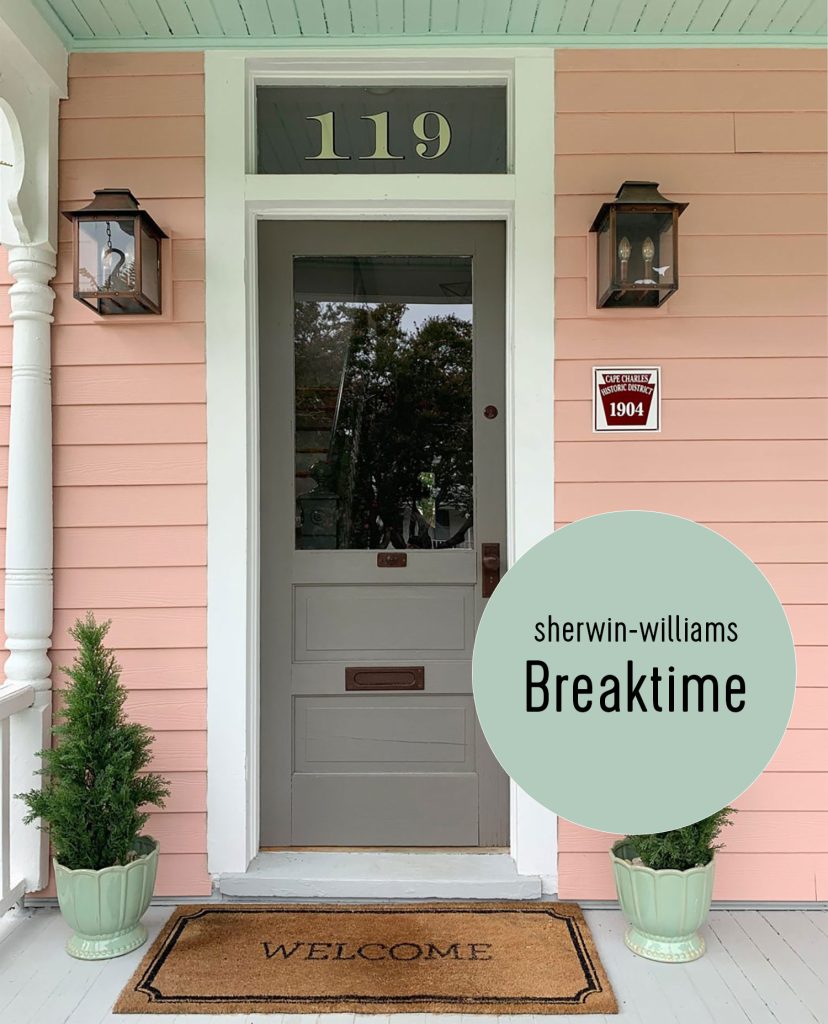
Also, if you have existing blues or greens in your color scheme, be aware of how those might skew the perception of your haint blue ceiling. A haint blue tone may appear bluer next to a green home, or greener next to a blue home.
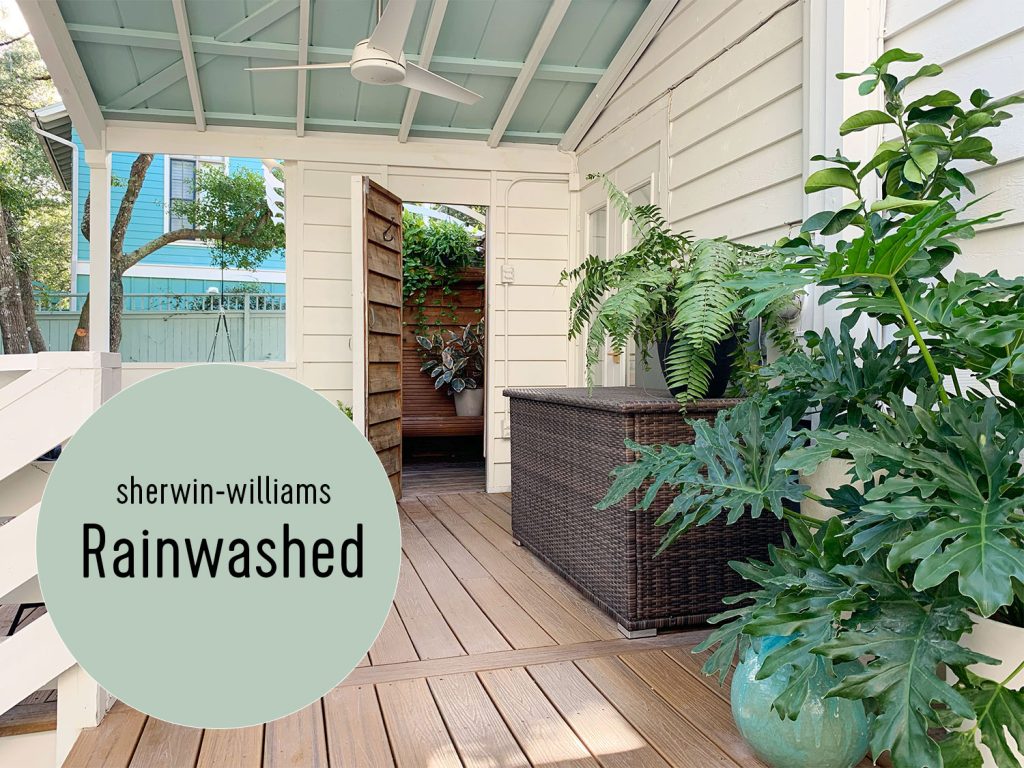
For our front porch above, we chose a greener haint blue (SW Rainwashed) to coordinate with the abundance of greenery that surrounds our house – and our blue-green fence in the background. The fence color (SW Halycon Green) is actually a darker color on the same paint swatch, so we were sure to keep the colors we chose in “the same family.”
What color is your exterior trim?
White trim helps to accent paint colors so they pop more and appear more saturated. This means homes with white trim may need a less saturated haint blue paint to prevent your ceiling from looking too bold. Conversely, on spaces with darker or non-white trim, you may want to choose a more saturated blue to ensure that the color pops. We used Behr Tide Pools in our first home’s sunroom for this reason.
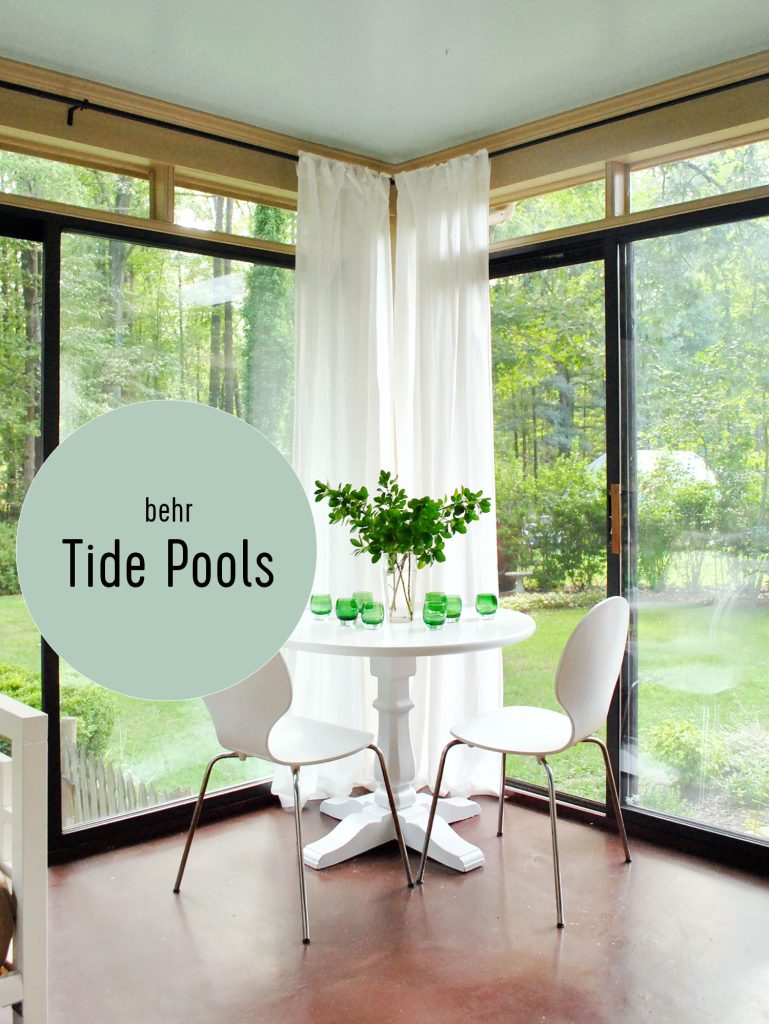
Even with all of these things considered, we always recommend testing a paint color or ordering a paint swatch before painting a space. Samplize is a service where you can order removable pre-painted stickers to test out a color without making a mess. Here are the exact paint color samples for the blue ceiling colors we’ve personally used:
How To Paint Your Porch Ceiling
Painting your porch ceiling haint blue is an easy DIY project. If you’ve painted a wall, you can totally do this too! Here are some extra supplies you may want to have on hand (in addition to your usual paintbrush and paint roller):
- Ladder or step ladder
- Dropcloth to catch drips
- Extension pole for your paint roller
- Handy paint pail (that’s what I’m holding below)
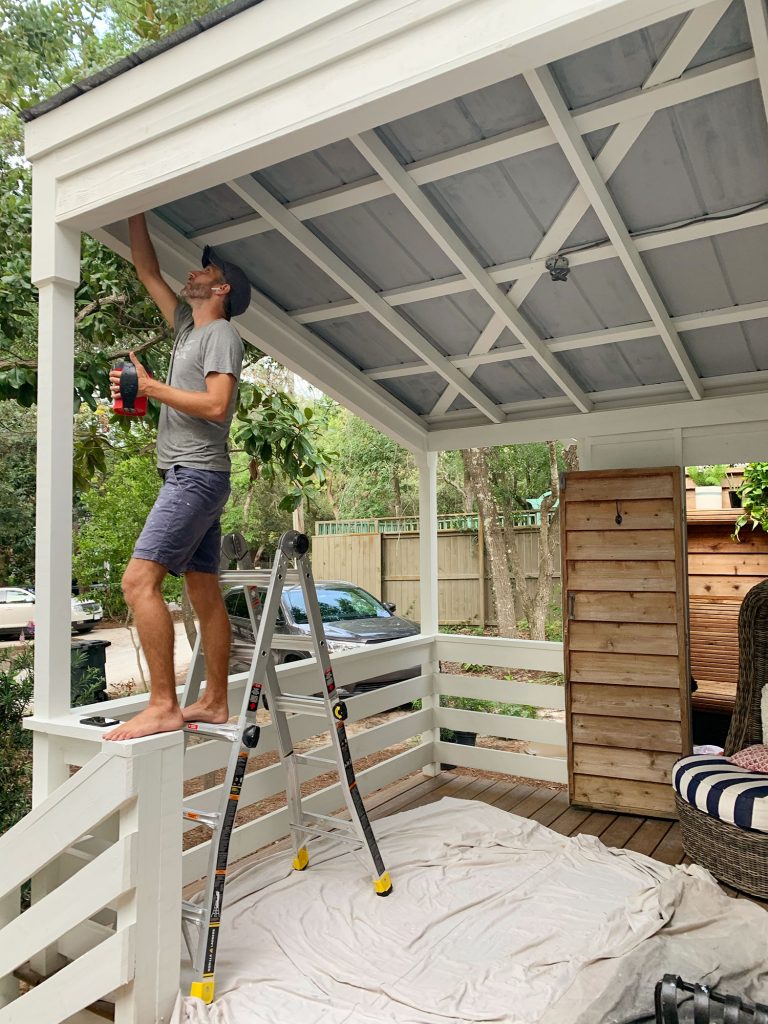
Be sure to use an exterior grade paint (we like Sherwin-Williams’ Emerald paints) in a semi-gloss sheen. While interior ceilings are typically flat or matte, we like to use semi-gloss on exterior surfaces because they are easier to clean. Speaking of which, take time to remove cobwebs, pollen, or other dirt before you paint to ensure good coverage. You may also want to use this opportunity to caulk any gaps or holes on or around your ceiling.
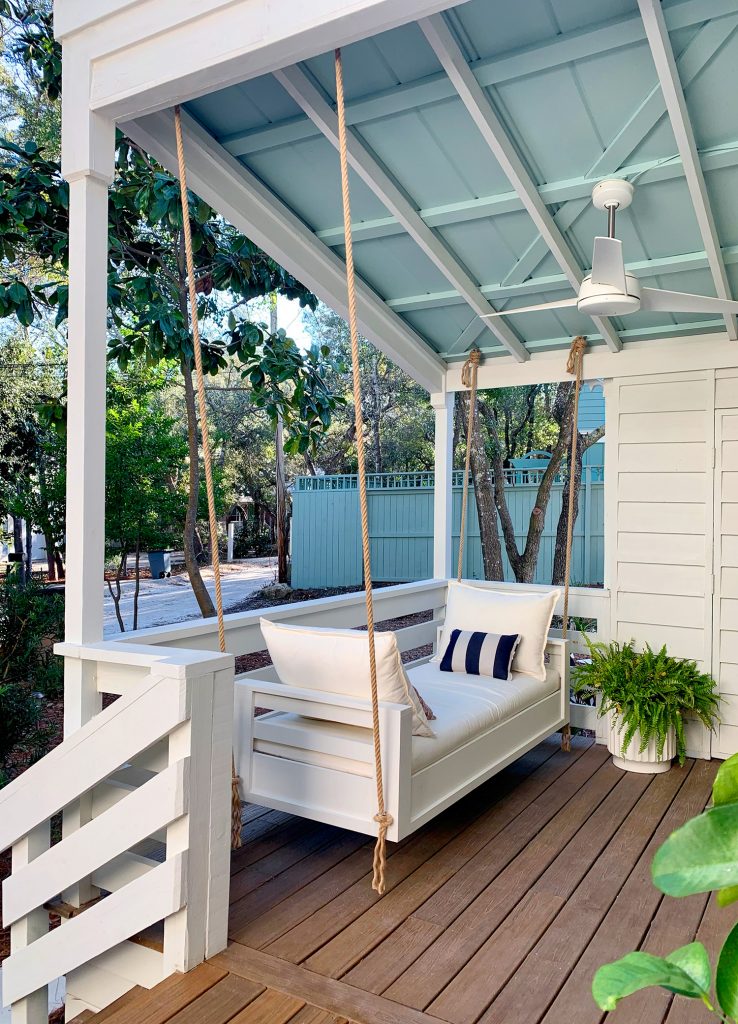
Our porch ceiling shown above is actually metal, so we also had to apply a coat of metal primer first. You will likely also need to prime if you’re painting over raw wood or an existing paint color that’s significantly darker or lighter than your new haint blue.
We also have this full video tutorial for painting a room – including a ceiling! – which shows you the process that you can use in an exterior porch as well.
Note: You can also watch this video on YouTube.
More Paint Colors We Love
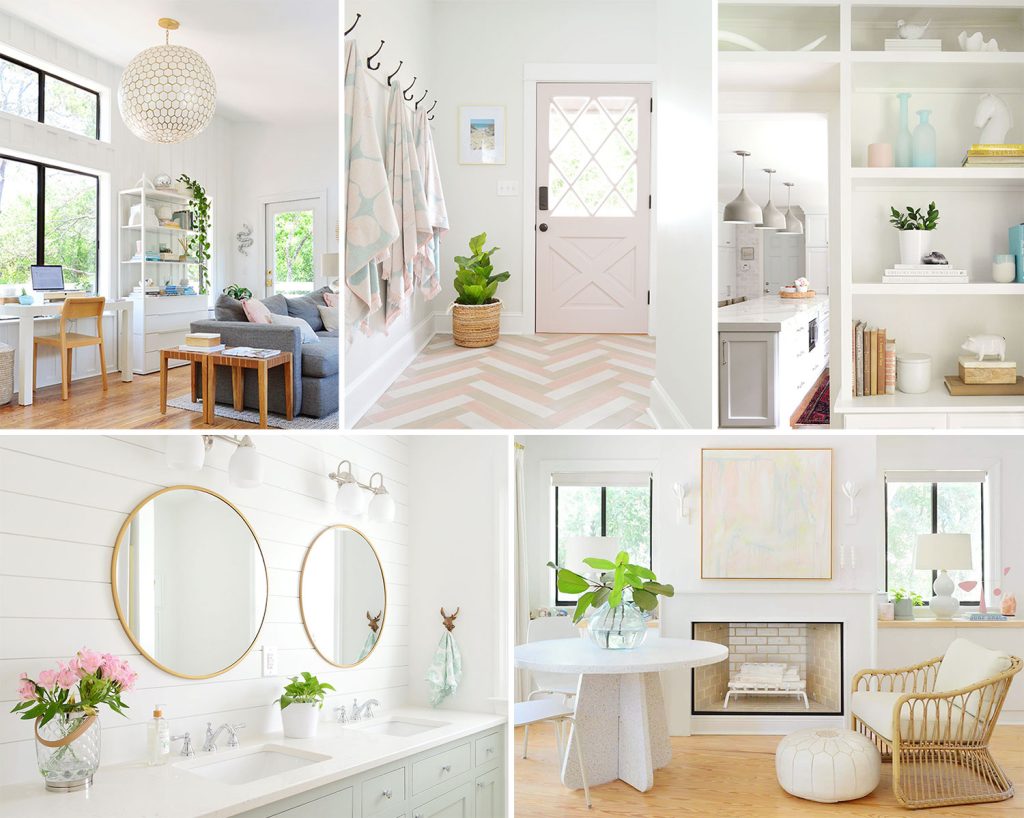
You can check out more of our favorite go-to paint colors by touring our homes in the menu at the top of our blog (here’s our current home, which is featured in this post) or by browsing our Painting Projects section. We’ve also written deep-dives on some of our other favorite paint colors, like:
*This post contains affiliate links, so we may earn a small commission when you make a purchase through links on our site at no additional cost to you.
